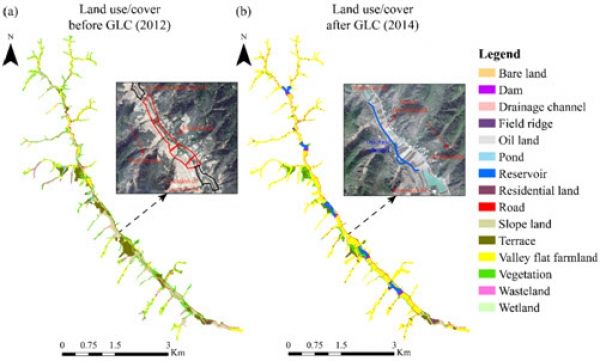Its main goal includes reshaping creek valleys by incising foot slopes, filling stream channels and ditches, constructing drainage canals, dams and reservoirs, and creating flat farmlands.
Previous studies found that, compared to a natural catchment, the soil nitrate increased significantly in the deep profile of the valley flat farmland in a reshaped catchment. However, whether such valley reshaping, damming and agricultural land consolidation affect the surface and groundwater nitrate and pose a threat to local people remains unclear.
Recently, Prof. JIN Zhao's team from the Institute of Earth Environment (IEE) of the Chinese Academy of Sciences conducted extensive field investigation and experiments to enhance the understanding of water chemistry, inorganic nitrogen and environmental isotope levels in a dammed watershed and a natural watershed, revealing how valley shaping and damming affect water nitrate level and source at watershed scale.
They found that nitrate concentrations in both the natural and dammed watersheds were lower than 10 mg·L-1, among which the seasonal nitrate contents in the surface (0.42-0.52 mg·L-1) and groundwater (1.86-3.65 mg·L-1) of the dammed watershed were significantly lower than those of the natural watershed (surface water: 0.92-2.07 mg·L-1; groundwater: 2.73-8.21 mg·L-1).
Continue reading at Chinese Academy of Sciences
Image via Chinese Academy of Sciences


